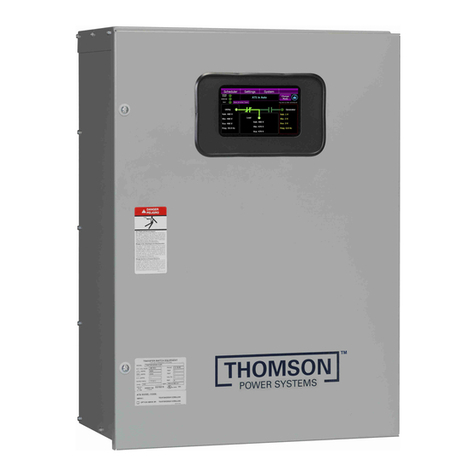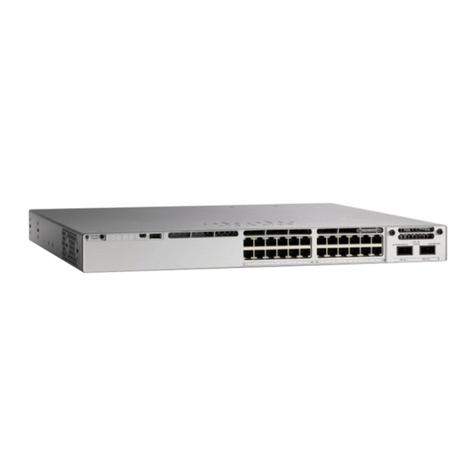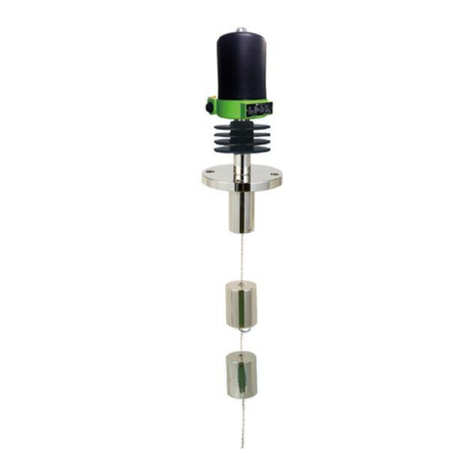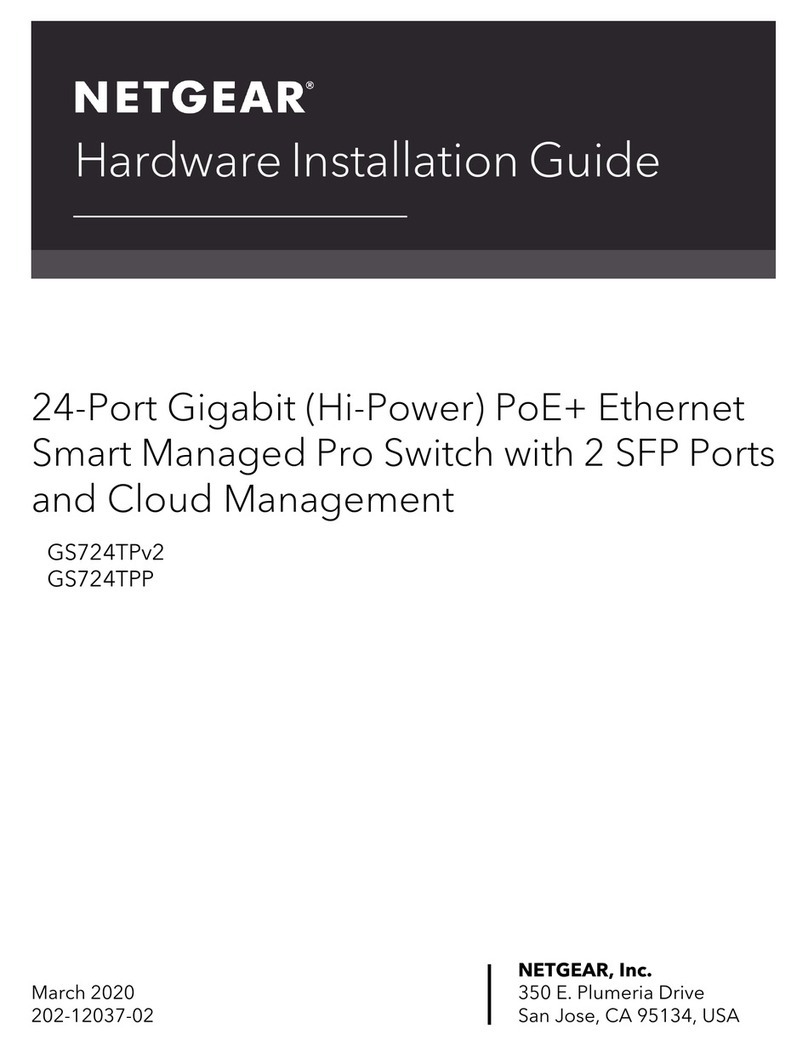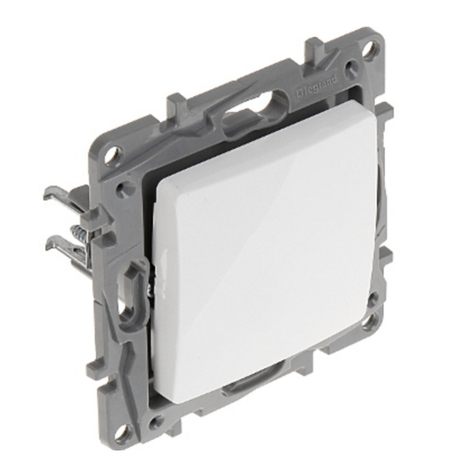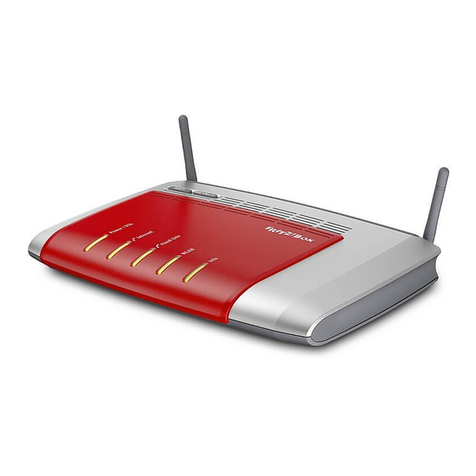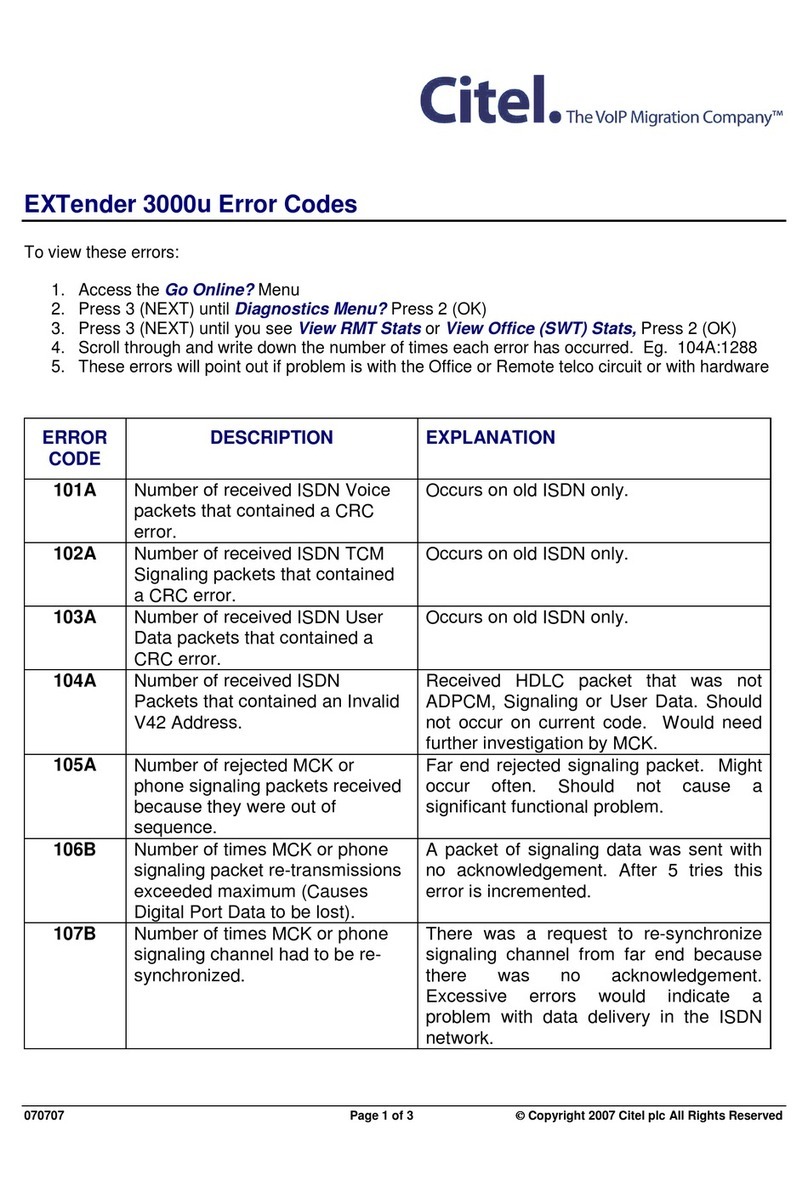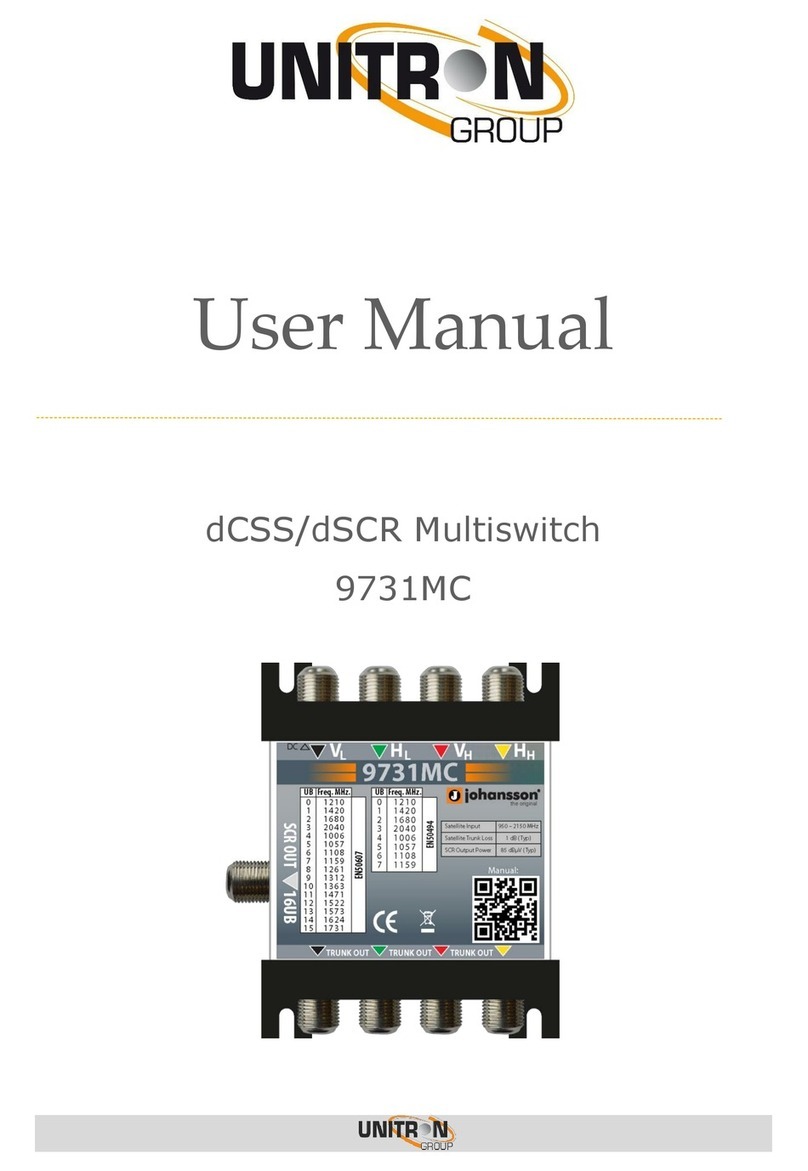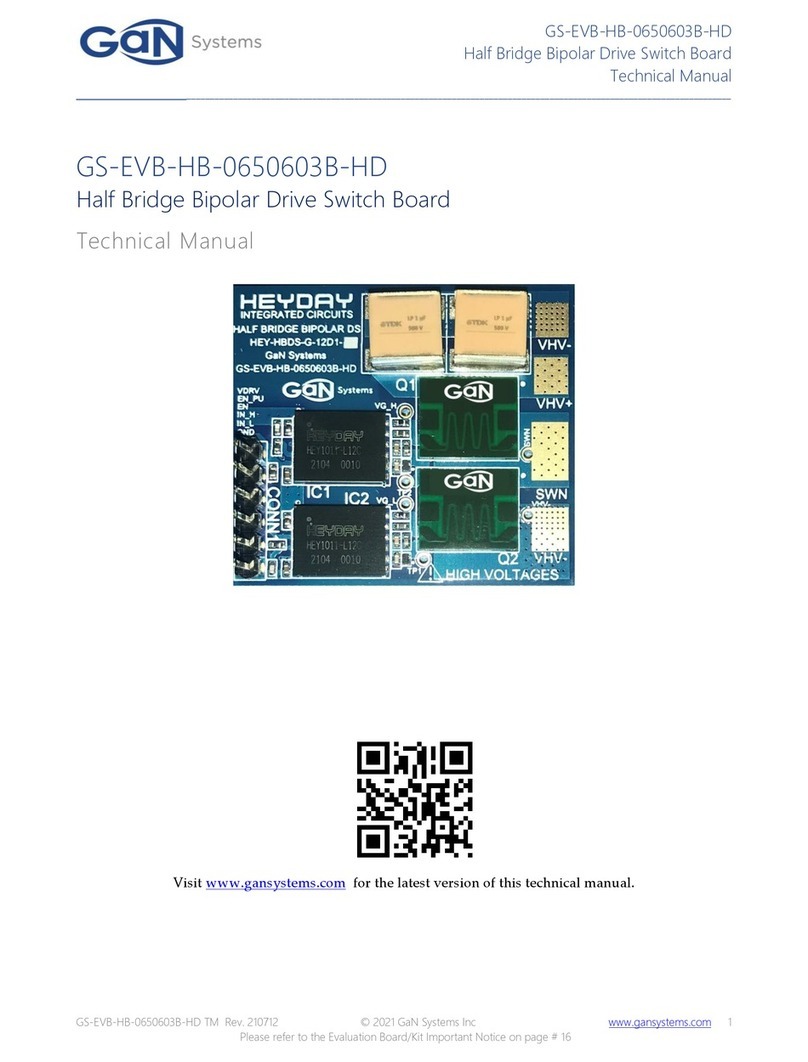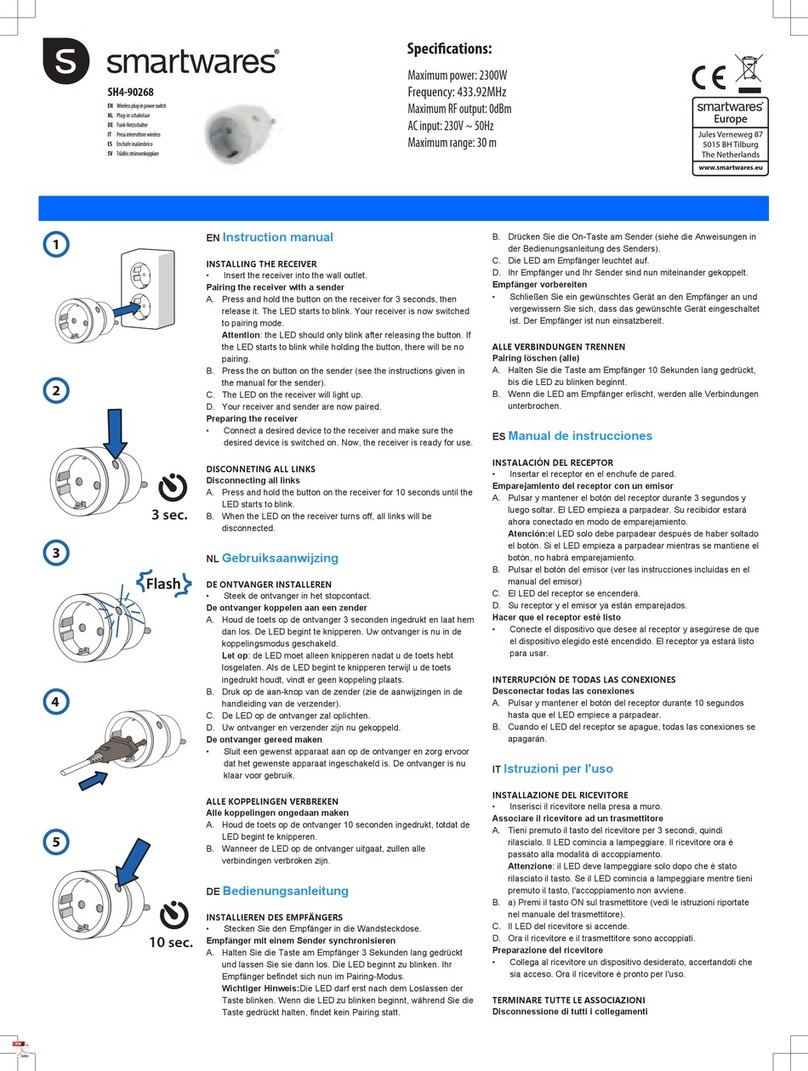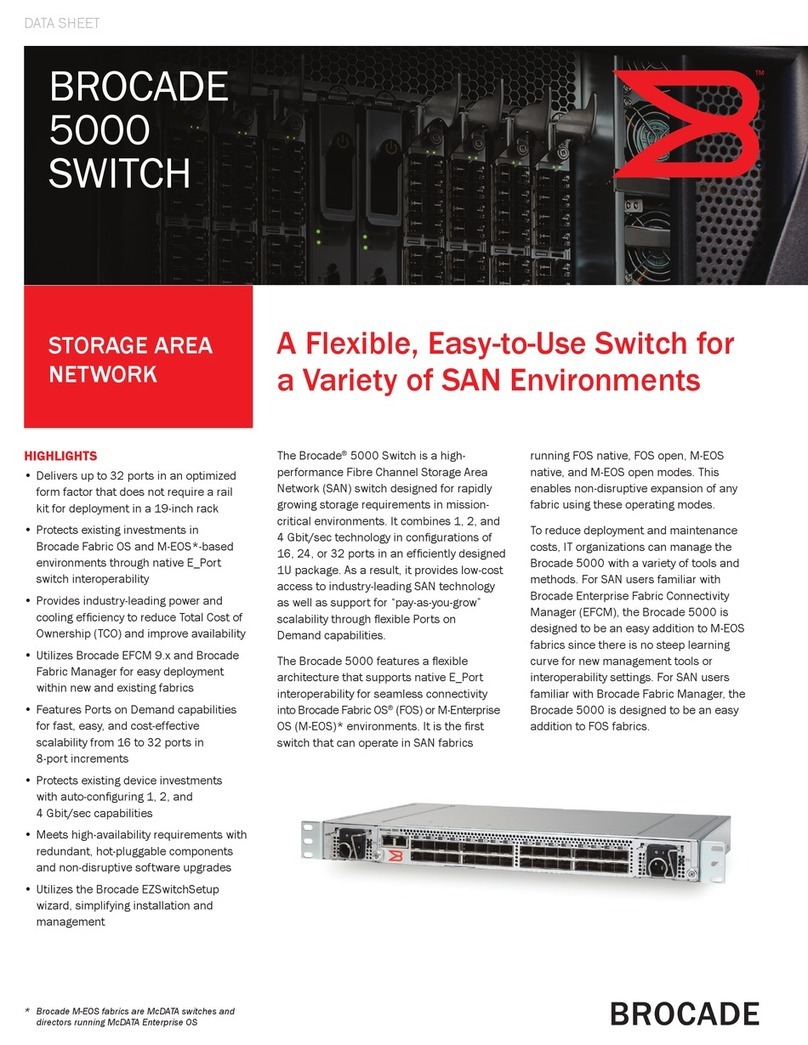Thomson Power Systems TS 870 ATS User manual

Part ID 013191
QUICK START GUIDE
TS 870 ATS
100A – 800A (OPEN TRANSITION)
TSC 7320 Controller Firmware Version R0
DANGER
HAZARD OF ELECTRICAL SHOCK, EXPLOSION, OR ARC FLASH
Read and understand this quick start guide before installing and operating the transfer switch
The installer is responsible for compliance with National Electrical Code (NEC) or Canadian Electrical Code (CEC) requirements with respect
to installation of this equipment.
Many components of this equipment operate at line voltage. DO NOT TOUCH. Use only electrically isolated tools.
Install and close all covers before applying power to this equipment.
Do not open covers to equipment until ALL power sources are disconnected.
This equipment must be installed and serviced only by qualified electrical personnel utilizing safe work practices and appropriate Personal
Protective Equipment (PPE).
Failure to do so may cause personal injury or death
PAGE
A. Introduction ........................................................................................................................... 2
B. Check Equipment Delivery ................................................................................................... 2
C. Check Line Voltage/Amperage ............................................................................................. 2
D. Installation Requirements..................................................................................................... 2
E. Service Entrance Rated ATS (US Market Only) .................................................................. 3
F. Typical Interior Component Layout Drawing ...................................................................... 4
G. Power Conductor Installation ............................................................................................... 5
H. Power Conductor Insulation Resistance Testing ............................................................... 5
I. Engine Start Wiring Connections ........................................................................................ 6
J. Remote Input Wiring Connections ....................................................................................... 7
K. Programmable Output Contacts .......................................................................................... 7
L. TSC 7320 Factory Default Programming ............................................................................. 8
M. Transfer Switch Operation .................................................................................................... 9
N. Equipment Energization Procedure ................................................................................... 13
O. TS 870 System Voltage Change Procedure ...................................................................... 15

PM 173 Rev 0 23/02/10 2 Thomson Power Systems
TS 870 with TSC 7320 Quick Start Guide
A. Introduction
Thank you for purchasing a Thomson Power Systems product. This quick start guide applies to open transition TS 870 Industrial Transfer Switch 100A-
800A models with TSC 7320 Controller. For other model types including Closed Transition, Dual Source, please contact Thomson Power Systems.
NOTE: Rev 0 of this Quick Start Guide applies to TSC 7320 with firmware revision R0.
This quick start guide contains all the information you typically need to install and set up a Thomson Power Systems TS 870 Transfer Switch.
To conserve our natural resources, the transfer switch does not include printed O&M manuals. O&M manuals containing complete information about
operating the transfer switch is available at our Web site. Go to www.thomsonps.com and download applicable TS 870 and TSC 7320 O&M manuals.
NOTE:
All information contained in this quick start
guide
is for reference only and is subject to change without notice.
B. Check Equipment Delivery
Upon delivery of the transfer switch, remove the product packaging and verify the product has not been damaged.
WARNING: Damaged Transfer Switch equipment: Do not install or operate the transfer switch if it appears damaged. Failure to
follow these instructions can result in death, serious injury, or equipment damage.
Check that the model number printed on the equipment label on the door of the transfer switch is the same as on the delivery note corresponding to the
purchase order.
C. Check Line Voltage/Amperage
Verify the line voltage and amperage of the transfer switch product labeling matches the site requirements.
NOTE: All TS 870 transfer switches are equipped with Multi-Voltage field change feature capability. The TS 870 transfer switch can be configured for
operation on different nominal voltage levels by way of TSC 7320 software configuration and control transformer tap change. Refer to Section O of this
guide for detailed voltage change procedure.
NOTE: For applications utilizing single phase high-leg/red-leg delta systems, refer to detailed instructions provided in the TS 870 O&M manual for voltage
phasing connections or damage may result.
WARNING: Do not install the transfer switch if either voltage or amperage does not match. Failure to follow these instructions can result in
death, serious injury, or equipment damage.
D. Installation Requirements
Before installing the transfer switch, review the following requirements:
Installation Codes/Permits: Suitable permits are required by local authorities having jurisdiction prior to installing standby generator sets and
automatic transfer switches.
Installation Location: The standard TS 870 transfer switch is designed for indoor wall mounting or outdoor wall mounting with NEMA 3R
rating. The transfer switch must be installed in an environment where the temperature range is within +5° to +122° Fahrenheit (-15° to +50°
Celsius) and humidity range not exceeding 5%-95% non-condensing.
Power Cabling: All power cabling entering/exiting the enclosure must be installed in suitably sized conduit per NEC/CEC requirements.
Ampacity, type and voltage rating of current carrying conductors must also comply with NEC/CEC requirements and local authorities having
jurisdiction.
Control Wiring: All control wiring for engine start, load shed, alarm and remote test must be installed in separate conduits from all power cabling
and must utilize suitably sized conduits per NEC/CEC requirements. All control wiring shall be sized for minimum #18 AWG. Control wiring type
and voltage rating must also comply with NEC/CEC requirements and local authorities having jurisdiction.
NOTE: All field wiring/communication cabling that maybe field installed directly onto any ATS door mounted components must be suitably routed
and protected across the door hinge to prevent possible mechanical damage upon door opening and/or door closing.
Generator Set Automatic Operation: The TS 870 transfer switch operates in conjunction with any generator set with remote automatic starting
capabilities utilizing a 2 wire, remote start control contact input. A dry contact is provided for remote generator starting control (contact closes
to start generator and opens to stop generator).
Load Types: The standard TS 870 is suitable for control of motors, electric discharge lamps, tungsten filament lamps, and electric heating
equipment where the sum of motor full-load ampere ratings and the ampere ratings of other loads do not exceed the ampere rating of the switch
and the tungsten load does not exceed 30 percent of the switch rating.
Upstream Overcurrent Protection: Standard TS 870 transfer switch models do not contain any integral over current protection and require
upstream over current protection devices for both Utility and Generator sources.
Application: The TS 870 Transfer Switch is Listed by Underwriters Laboratories (UL) to Safety Standard UL 1008 for Transfer Switches for
Emergency Standby applications. This product is intended for installation and operation on legally required standby applications for emergency
power systems as defined by the National Electrical Code (NEC).
Withstand/Interrupting Current Ratings: Refer to electrical ratings shown on Table #1 below for withstand current ratings on Standard TS
870 type transfer switches. Refer to electrical ratings shown Table #2 for interrupting ratings for Service Entrance type ATS or ATS’s supplied
with power switching devices with integral trip units.

PM 173 Rev 0 23/02/10 3 Thomson Power Systems
TS 870 with TSC 7320 Quick Start Guide
WARNING: Do not install the transfer switch on systems with higher available short circuit current levels than listed in Table #1. Failure to
follow these instructions can result in death, serious injury, or equipment damage.
Table #1
Withstand Current Ratings
1. Standard ratings only are shown. Consult Thomson Power Systems for versions with higher withstand current ratings.
2. For other model types not shown, contact Thomson Power Systems for further information.
3. Withstand rating specified is for 250A, 3P. For 250A, the 4P rating are 65KA@240V, 35KA@480V and 22KA@600V
E. Service Entrance Rated ATS (US Market Only)
The following information pertains only to Automatic Transfer Switches supplied for the US Market with Service Entrance rated option or ATS models
with integral overcurrent protection option.
Upstream Overcurrent Protection (Service Entrance Rated TS 870): Service Entrance rated TS 870 transfer switch models contain integral
over current protection for the Utility source as standard. Service Entrance rated TS 870 transfer switches do not contain any integral over
current protection for the generator source and requires upstream generator source over current protection. The Service Entrance rated TS
870 is rated for 80% maximum continuous loading of load types as described above.
WARNING: Do not install the transfer switch on systems with higher available short circuit current levels than listed in Table #2. Failure to
follow these instructions can result in death, serious injury, or equipment damage.
Table #2
Interrupting Current Ratings (for ATS with Internal Overcurrent Trip Units)
1. Standard ratings only are shown. Contact Thomson Power Systems for versions with higher interrupting current
ratings.
2. For other model types not shown, contact Thomson Power Systems for further information.

PM 173 Rev 0 23/02/10 4 Thomson Power Systems
TS 870 with TSC 7320 Quick Start Guide
F. Typical Interior Component Layout Drawing
3 Pole Model, 100A—200A Shown

PM 173 Rev 0 23/02/10 5 Thomson Power Systems
TS 870 with TSC 7320 Quick Start Guide
G. Power Conductor Installation
The transfer switch is provided with power cable lugs for line, load and neutral block as per sizes indicated in Table #3 below. All Power cables are to
be installed and torqued on the lugs per values indicated on Table #3. Refer to ATS Physical Layout drawings as supplied with the ATS for Power
Cable entry/exit locations on the enclosure.
WARNING: Failure to properly install and adequately tighten power cable connections can result in equipment malfunction and/or damage.
TABLE #3
H. Power Conductor Insulation Resistance Testing
NOTE: Before insulation resistance testing is conducted, the Transfer Switch electronic Controller (TSC 7320) must be isolated from the
power wiring by unplugging ATS wiring plugs PL12 & PL15 located on the inside of the ATS door. Next isolate the 24VDC section by opening all fuses
on the Potential Transformer plate and disconnecting any 24VDC auxiliary power source connected to the B+ and B- terminals. Refer to drawing
shown below. Failure to isolate the TSC 7320 controller for insulation resistance testing can result in equipment malfunction and/or damage.
Following power cable installation, and isolating the TSC 7320 controller, all power cables shall be appropriately insulation resistance tested to
ensure no cross-phase connections or conduction to ground.
Once insulation resistance testing is complete, re-insert PL12 & PL15 isolation plugs, and close all the fuses on the Potential Transformer plate.

PM 173 Rev 0 23/02/10 6 Thomson Power Systems
TS 870 with TSC 7320 Quick Start Guide
I. Engine Start Wiring Connections
The Engine start wiring connection is located on the inside of the ATS Enclosure on the right-hand side wall as highlighted on the drawing below.
The engine start circuit works in conjunction with any generator set with remote automatic starting capabilities utilizing a 2 wire, remote start control
contact input. A dry contact is provided for remote generator starting control (contact closes to start generator and opens to stop generator).
Connections are made to TB2 terminals #1 & #2 per drawing shown below. Note: the contacts are rated for 8 amps @ 250VAC with a resistive load.
NOTE: if control power is de-energized to the TSC 7320 controller, the engine start contact will automatically close to start the generator set, following
the engine start delay time setting.
WARNING: Do not apply a resistive load greater than 8A @ 250VAC across the engine start terminals #30 & #31 as this will cause damage
to the TSC 7320 controller.
Change

PM 173 Rev 0 23/02/10 7 Thomson Power Systems
TS 870 with TSC 7320 Quick Start Guide
J. Remote Input Wiring Connections
The TSC 7320 is provided from the factory with 14 programmable inputs with default settings per table shown below. 8 of the inputs are digital inputs,
and the other 6 are analogue inputs that can also be programmed to be more digital inputs. Refer to the TSC 7320 Manual for further information on
programming changes as required.
NOTE: All control wiring required for any remote input connection must be made directly to the door mounted TSC 7320 as per drawing below. All
input wire cabling that may be installed must be suitably routed and protected across the door hinge to prevent possible mechanical damage upon
door opening and/or door closing.
WARNING: Do not apply any voltage across the input terminal and DC common as this will cause damage to the TS 7320 controller.
Connect only a dry (i.e. voltage-free) contact.
K. Programmable Output Contacts
The TSC 7320 is provided from the factory with 8 programmable digital outputs and 2 programmable dry contact outputs with default settings per the
table shown below. Refer to the TSC 7320 Manual for further information on programming changes as required. The Digital outputs are rated 2A @
24VDC resistive. Dry output contacts are rated at 8 amps @ 250Vac resistive. One of the dry contacts are normally closed and the other contact is
normally open.
NOTE: All control wiring required for any programmable output connections must be made directly to the door mounted TSC 7320 controller as per
drawing below. All output wire cabling that may be installed must be suitably routed and protected across the door hinge to prevent possible mechanical
damage upon door opening and/or door closing.
WARNING: Do not apply any voltage across the output contacts as this will cause damage to the TSC 7320 controller. Connect a load in
series with applicable voltage/current as specified.

PM 173 Rev 0 23/02/10 8 Thomson Power Systems
TS 870 with TSC 7320 Quick Start Guide
L. TSC 7320 Factory Default Programming
The TSC 7320 is factory programmed with default settings as shown as per the following table. NOTE: This table is applicable for firmware version
R0. Refer to the TSC 7320 O&M Manual for programming instructions to change any default setting.

PM 173 Rev 0 23/02/10 9 Thomson Power Systems
TS 870 with TSC 7320 Quick Start Guide
M. Transfer Switch Operation
a. TSC 7320 Display Password Security Description/Login (User Administration)
There are two different areas to change the controller settings, one of the requires entering a pin to change the settings, and the other are does
not require a pin.
The following settings can be changed in the non-restricted area:
- Enable Elevator Timers - Elevator pre-timer - Elevator post-timer - Neutral delay timer
With the transfer switch energized, follow the procedure below to access the above settings:
Put the Transfer Switch into the “STOP” mode, by pressing the red button in the lower left corner of the controller.
Use the left or right navigation keys to find the “PLC Instrumentation Page”
Use the up or down navigation keys to find the setting to be adjusted
Press and hold the center checkmark button until the header changes to “PLC Editor” (about 1 second)
The timer on the screen will now begin to flash. Use the up or down navigation buttons to change the value of the timer
When the desired value is set, press the center checkmark to save the timer and exit.
If more settings need to be adjusted, repeat the above procedure.
Exiting the editor will automatically return the controller to auto mode.
To prevent un-authorized access, all the other transfer switch settings can only be changed in the restricted area.
With the transfer switch energized, follow the procedure below to login to the TSC 7320 controller:
Put the Transfer Switch into the “STOP” mode, by pressing the red button in the lower left corner of the controller.
Press the stop button AND the center checkmark button (middle of navigation buttons) at the same time.
The screen’s header will read “Editor” and the screen will ask for a 4-digit pin number.
Use the navigation buttons to enter the default PIN “1 1 1 1”. The up and down buttons will change the value, and the left and right buttons
will let the user cycle between the 4 digits.
After the pin has been entered, press the center checkmark button to confirm and login to the restricted area.
The left or right navigation keys can now be used to cycle between different groups of settings, and the up and down buttons can be used
to cycle between the settings for that group
Once the screen shows the desired setting, press the center checkmark button and the value will start to flash
Use the up and down buttons to change the value, and the center checkmark button to confirm that value
Find and change all settings as desired
To exit the editor mode, hold the center checkmark button for 5 seconds while not editing any settings.

PM 173 Rev 0 23/02/10 10 Thomson Power Systems
TS 870 with TSC 7320 Quick Start Guide
b. Display Screen Navigation
The TSC 7320 controller has pre-programmed display pages which are selected manually using the buttons on the front of the controller,
by pushing the left and right navigation buttons.
The display pages are organized into the following order and can be continuously cycled through left or right:
Status – Engine – Generator – Mains – Alarms – Event Log – Communications – Schedule – PLC Instruments – About
More information can be found by using the up and down buttons for a given display page (voltage and transfer switch state, etc.).

PM 173 Rev 0 23/02/10 11 Thomson Power Systems
TS 870 with TSC 7320 Quick Start Guide
c. Operation Modes
Mode Description ATS Mechanism
Control Outputs
Engine Start Output
AUTO ATS automatically transfers to Generator (Source 2)
during a Utility (Source 1) failure and automatically
returns power to utility once restored
Outputs automatically operate
ATS mechanism per
automatic sequence of
operation
Output contact closes to start
engine during a utility (source
1) failure and opens to stop
engine once utility power has
transferred back
to the
load.
STOP MODE ATS will immediately start transferring to utility and stay
there. The ATS will not automatically operate during a
utility power failure
Outputs momentarily energize
to move ATS mechanism to
the Utility position. If the
mechanism is moved away
from Utility, the controller will
automatically move it back to
Utility.
Output is disabled - engine
will not start during a utility
power failure1
Engine will stop if it was
previously running
TEST MODE ATS will not automatically operate during a utility power
failure, and The ATS will transfer to utility if there is a gen
power failure. ATS cannot be operated manually as the
controller will keep the breaker on utility.
Outputs momentarily energize
to move ATS mechanism to
the Utility position. If the
mechanism is moved away
from Utility, the controller will
automatically move it back to
Utility.
Output is enabled but engine
will not start during a utility
power failure1.
Engine will continue to run
unless there is a fault.
MANUAL ATS will not automatically operate during a utility power
failure, and The ATS will transfer to utility if there is a gen
power failure. ATS cannot be operated manually as the
controller will keep the breaker on utility.
Outputs momentarily energize
to move ATS mechanism to
the Utility position. If the
mechanism is moved away
from Utility, the controller will
automatically move it back to
Utility.
Output is enabled but engine
will not start during a utility
power failure1.
Engine will continue to run
unless there is a fault.
SERVICE
DISCONNECT
(Service
Entrance Only-
US Market
ATS)
ATS transfers to neutral position to disconnect power to
the load. ATS will not automatically operate during a
utility power failure.
Note:
When the Service Disconnect signal is removed, the
transfer switch will immediately return to the utility, and
the controller will remain in STOP mode. When required,
put the controller back in
Auto mode.
Outputs momentarily energize
to move ATS mechanism to
the neutral position.
Output is disabled - engine
will not start during a utility
power failure1. Engine will
stop if it was previously
running
ON LOAD
TEST
When ONLOAD TEST mode is initiated, a utility power
failure condition will be simulated which will cause engine
to start and ATS will transfer to generator supply. When
TEST mode is terminated, ATS will transfer back to utility
supply and engine will stop
Outputs automatically operate
ATS mechanism per
automatic sequence of
operation
Output contact closes to start
engine during the ONLOAD
TEST mode. Output
automatically opens when
test mode is terminated and
ATS is back on utility power
EXERCISE
ON LOAD
TEST
When ONLOAD TEST mode is initiated, a utility power
failure condition will be simulated which will cause engine
to start and ATS will transfer to generator supply. When
TEST mode is terminated, ATS will transfer back to utility
supply and engine will stop
Outputs automatically operate
ATS mechanism per
automatic sequence of
operation
Output contact closes to start
engine during the ONLOAD
TEST mode. Output
automatically opens when
test mode is terminated and
ATS is back on utility power
MANUAL OFF
LOAD
TEST
When OFF LOAD TEST mode is manually initiated,
engine will start and run, but the ATS will not transfer to
the generator. When OFF LOAD TEST mode is
terminated, engine will stop
Outputs do not change state
even if utility or generator
supply fails
Output automatically closes
to start engine during the
OFF LOAD test mode.
Output automatically opens
when test mode is terminated
EXERCISE
OFF LOAD
TEST
When OFF LOAD TEST mode is initiated, engine will
start and run, but the ATS will not transfer to the
generator. When OFF LOAD TEST mode is terminated,
engine will stop
Outputs do not change state
unless utility or generator
supply fails in Off Load test
mode
Output automatically closes
to start engine during the
OFF LOAD test mode.
Output automatically opens
when test mode is terminated
EXERCISE
SCHEDULE
When an EXERCISE SCHEDULE occurs, the ATS will
perform an exercise test on the pre-selected calendar
date and time. The Generator will operate on load or off
load as selected and will continue to run for the Exercise
duration period as selected. If a re-occurring Exercise
mode is selected, ATS will repeat an exercise test based
on the calendar dates and times as selected.
Outputs operate ATS
mechanism per automatic
sequence of operation if
programmed for ON LOAD
TEST operation.
Output contact closes to start
engine during the EXERCISE
test mode. Output
automatically opens when
exercise mode is terminated
1 The TSC 7320 requires continuous control power (i.e. utility/gen power on, or 24VDC aux power on) to keep the automatic engine start output
disabled. If control power is de-energized, the engine start output will close after approximately 1 minute, once its power reservoir de-energizes.
This in turn will cause a repeating engine start/stop event every 3-4 minutes. To prevent engine start/stop cycling condition upon loss of control
power, the local engine control panel should be selected for the OFF operating mode.

PM 173 Rev 0 23/02/10 12 Thomson Power Systems
TS 870 with TSC 7320 Quick Start Guide
d. Automatic Sequence of Operation
NOTE: Time delays indicated below are factory default settings only. Refer to TSC 7320 manual for alternate time delay settings available on
the
TSC 7320
Controller
UTILITY POWER
FAIL
When voltage drops on any phase of the utility supply below 85% of rated voltage, a generator start sequence
will be initiated
GEN START The generator will start following expiry of the 2 second Gen Start timer
GEN WARMUP A generator warmup period will be initiated once the generator starts running, and will not transfer until the timer
expires
, or a fault occurs
TRANSFER TO
GEN
The load will transfer to the generator supply following expiry of the 2 second Gen Warmup timer
UTILITY POWER
RETURN
When utility power is restored to above 90% rated voltage on all phases, a utility return timer sequence will be
initiated
TRANSFER AWAY
FROM
GENERATOR
The load will transfer away from the generator supply following expiry of the 300 second utility return timer
TRANSFER TO
UTILITY
Once the load transfers off of the generator supply, the load will re-transfer back onto the utility supply following
expiry of the 3 second neutral delay timer
GEN COOLDOWN The generator will automatically stop following expiry of the 300 second cooldown timer.
e. TSC 7320 Controller ON LOAD TEST & OFF LOAD TEST Operation Instructions
ON LOAD TEST To initiate an ATS On Load Test, press the test button on the TSC 7320 controller to enter test mode.
Next, press the gen start button (green), and the controller will start the generator and once it reaches the nominal
voltage and frequency, the switch will be transferred to the generator and take over the load.
To stop the on-load test and return to normal, press the auto button, and the controller will start a utility return
delay timer, and transfer back to the utility when the timer expires. The generator will continue to run until the
cooling expires, and then it will turn off the generator.
Note :
Pushing the red stop button will initiate a return to Utility request followed by an engine stop. If the utility is available,
the ATS will transfer to utility and stop the engine ignoring any countdown timers. If the Utility is not available, the
controller will turn off the generator, and generate a Mains Fail to Close Alarm.
OFF LOAD TEST To initiate an ATS off load test, press the manual button on the TSC 7320 controller to enter manual mode.
Next, press the gen start button (green), and the controller will start the generator, but the switch will NOT transfer
to generator, even if the source is healthy.
To stop the off-load test and return to normal, press the STOP button, and the controller will turn off the generator.
If the Auto mode button is pushed, the controller will start a countdown timer and then turn off the generator.
f. TSC 7320 Controller Alarms
If any faults occur during the ATS operation the controller will turn on the “Alarm” LED beside the screen, the controller’s buzzer will start beeping,
and it will display the fault on the green LCD screen. If there is more than one fault, the up and down arrow keys can be used to cycle between the
different alarms. The alarms can also be silenced, or cleared by following the options below:
1.The alarms can be silenced by pushing the alarm button. This will stop the beeping from the controller but will NOT clear the alarm. Note; when
the alarm button is pushed all twelve on screen LEDs will light up, this is expected.
2. The alarms can be cleared by pushing and holding the alarm button for 5 seconds. The controller will reset all alarms and function as
intended again.

PM 173 Rev 0 23/02/10 13 Thomson Power Systems
TS 870 with TSC 7320 Quick Start Guide
g. ATS Manual Operation Instructions
The transfer switch may be operated manually for maintenance or emergency operation conditions provided both Utility and Generator supplies are
de-energized prior to manual operation.
DANGER HAZARD OF ELECTRICAL SHOCK, EXPLOSION, OR ARC FLASH
1. This equipment must be serviced only by qualified electrical personnel utilizing safe work practices and appropriate Personal
Protective Equipment (PPE).
2. Many components of this equipment operate at line voltage. DO NOT TOUCH. Use only electrically isolated tools.
3. Install and close all covers before applying power to this equipment
4. Do not open covers to equipment until ALL power sources are disconnected
Failure to do so may cause personal injury or death
Once both Utility and Generator supplies are de-energized the following procedure can be used to operate the Transfer Switch manually.
5. Disconnect the ATS Power Chassis & Voltage Sensing Isolation Plugs (PL12 & PL15) to prevent automatic operation.
6. Open ATS enclosure door and locate Manual Operation Handle provided with the transfer switch (see photo below)
Manual Operation Handle
7. Insert manual handle into the center hole of the transfer switch mechanism.
8. To manually operate mechanism, rotate handle to the desired position as labeled on the ATS mechanism cover. Do not over-torque
handle once position has been attained.
9. Once ATS is manually operated to desired position, re-close ATS enclosure door, then re-energize supply sources to re-energize the
load.
N. Equipment Energization Procedure
a. Pre-Energization Checks
1. Verify the generator and utility supply voltages match the model of the ATS ordered. If a different voltage is required, refer to procedure
in Section O of this guide for voltage change programming procedure.
2. Confirm power cable size is correct for the lugs supplied in the transfer switch (line, load, and neutral) and are properly torqued.
3. Confirm transfer switch has been adequately grounded per NEC/CEC requirements.
4. Confirm power cables have been insulation resistance tested to ensure no cross-phase connections or conduction to ground.
5. Check to ensure there is no mechanical damage.
6. Check to ensure no packaging materials or tools are left inside the transfer switch enclosure.
7. Verify control wiring connected to terminal blocks are properly installed (i.e. no frayed ends, screws are tight, no damage, etc.).
8. Ensure ATS Power Chassis & Voltage Sensing Isolation Plugs (PL12-1 & PL15-1) are inserted and all TSC 7320 Controller plugs are
inserted prior to operation.
9. Visually verify the transfer switch mechanism is closed in the utility position as indicated on the mechanism cover.
10. Verify correct control wire interconnects have been installed to the generator set auto start/stop controls.
NOTE: The ATS Engine Start contact CLOSES to start the engine and OPENS to stop the engine.
11. Ensure the inside of the transfer switch enclosure is clean from all dust, and other foreign materials.
12. Close the transfer switch enclosure door and tighten all door screws.
13. Visually verify on the transfer switch enclosure that there are no gaps, holes, or potential for water ingress.
b. Equipment Energization
DANGER - HAZARD OF ELECTRICAL SHOCK, EXPLOSION, OR ARC FLASH
This equipment must be serviced only by qualified electrical personnel utilizing safe work practices and appropriate Personal Protective
Equipment (PPE). Many components of this equipment operate at line voltage. DO NOT TOUCH. Use only electrically isolated tools. Failure
to do so may cause personal injury or death
.

PM 173 Rev 0 23/02/10 14 Thomson Power Systems
TS 870 with TSC 7320 Quick Start Guide
1. Confirm Utility, Generator and loads can be energized in a safe manner.
2. Energize utility supply and wait approximately 20 seconds for the TSC 7320 controller to successfully perform an initial “boot-up” process.
The Thomson Power Systems Logo will be displayed during the booting process.
NOTE: under normal operation, TSC 7320 controller will not re-boot due to use of an external control power reservoir circuit. The Low
Power Buffer (LPB) maintains DC control power during Utility power failures, allowing the controller to start the gen and transfer to it
without rebooting.
3. Confirm utility voltage on the TSC 7320 DISPLAY Home page is matching the rating of the ATS. If the voltage is not matching, refer to
Section O, TS 870 System Voltage Change Procedure, of the quick start guide to modify the controller settings. If the voltage is
matching, the ATS will automatically transfer to the Utility source.
4. To perform any changes to the TSC 7320 controller settings, refer to Section M(a) of this document for details.
5. Set the TSC 7320 Internal time clock – With the TSC 7320 powered on, Enter the restricted area of the settings, and find the page with
the “Display” heading. If the date and time is not listed, the up or down navigation button may need to be pressed to show the setting
a. Press the center checkmark button and one section will start to flash. Use the up or down navigation keys to change the value
of the flashing setting, and the left and right keys to change which part of the setting is going to be changed
b. Change all parts of the time and date to match the desired values and press the center checkmark when finished. Hold the
center checkmark to exit the editor mode.
6. Verify the status of the following indicator lights on the TSC 7320 front panel:
a. Utility Source Green LED is “ON” when the voltage is healthy and available
b. Load on Utility Green LED is “ON” when the load is connected to the utility
7. Run the generator manually and confirm generator voltage on the TSC 7320 display, the voltage is displayed on the “Generator” page.
Verify the measured voltage is correct and matches the rating of the ATS.
8. With generator still running, confirm generator phasing matches that of the Utility supply by viewing the “Generator” page, and using the
up or down navigation buttons to find the “Gen Phase Sequence” page. If phase rotation does not match, de-energize ATS and re-
confirm supply rotation and power wiring is correct.
NOTE
On 3 Phase Systems, the TSC 7320 ATS controller has Phase Rotation miss-match protection. For the ATS to successfully
transfer between sources, both the Utility and Generator Source Phase rotation must be matched. Phase rotation on both sources
can be either positive rotation (i.e. A-B-C) or negative rotation (C-B-A) via programming selection on the TSC 7320.
9. Verify the TSC 7320 front panel Generator Source green LED is “ON”:
10. Manually stop generator and place the generator controls in the "AUTOMATIC" position.
11. To confirm automatic starting and load transferring of the generator, perform an On-Load test as described in section M(e). Press the
“Test mode” button, and then press the green “Start” button. The generator will start and transfer on load per Automatic Sequence. The
following lights on the
TSC 7320
front panel
should be on:
En
gine
Start, Gen Source
LED
and Load on Gen
LED
.

PM 173 Rev 0 23/02/10 15 Thomson Power Systems
TS 870 with TSC 7320 Quick Start Guide
12. To stop the generator and transfer load back to the utility supply, press the “Auto” button to return to auto mode. The load will re-transfer
back to the utility power as per Automatic Sequence.
13. Perform a utility power outage test by opening the upstream utility feeder breaker to the ATS. The TSC 7320 front panel Utility available
LED will turn off; the generator set will start after the 2-second engine start delay has expired and the generator will start and transfer on
load as per Automatic Sequence.
14. Return Utility supply voltage to the ATS by re-closing the upstream utility breaker. The load should re-transfer back to the utility supply
as per Automatic Sequence.
O. TS 870 System Voltage Change Procedure
The system voltage change procedure is a 2 step process 1) ATS Potential Transformer Tap Change and 2) TSC 7320 Software Programming.
Details of each step are as follows:
1) ATS Potential Transformer Tap Change
DANGER
HAZARD OF ELECTRICAL SHOCK, EXPLOSION, OR ARC FLASH
This equipment must be serviced only by qualified electrical personnel utilizing safe work practices and appropriate Personal
Protective Equipment (PPE).
Many components of this equipment operate at line voltage. DO NOT TOUCH. Use only electrically isolated tools.
Install and close all covers before applying power to this equipment
Do not open covers to equipment until ALL power sources are disconnected
1. Ensure all power sources are de-energized and are safely Locked-out from service prior to opening the transfer switch enclosure door.
2. Disconnect AC Sensing and ATS Power Chassis Circuit Isolation Plugs PL12 & PL15.
3. Change voltage transformer primary taps settings as follows to match new system voltage on all multi-tap potential transformers (PTs). (Refer
to wiring schematic diagram below).
4. Carefully remove the potential transformer high voltage side covers by prying up on the edge of the cover with a ¼” Flat Head Blade
screwdriver and lifting off.
NOTE: You can also use your finger to pry up on the edge of the PT cover.

PM 173 Rev 0 23/02/10 16 Thomson Power Systems
TS 870 with TSC 7320 Quick Start Guide
5. Remove the screw on the PT Tap which is the correct voltage selected for the application (i.e. H2-208V, H3-240V, H4-480V or H5-600V)
H6-Not Used H5-600V H4-480V H3-240V H2-208V H1 (Never Changes)
CAUTION: Brace PT terminal block with your hand when loosening or tightening ANY screws.
6. Remove the screw and red ring terminal connected to the incorrect (existing) PT voltage terminal. Install the screw and red ring terminal to
the new selected PT Tap Terminal based on required voltage and tighten while supporting the terminal block. Make sure the ring terminal is
not misaligned or the PT cover will not fit back on.
7. Install the extra screw back onto the old PT location and tighten.
CAUTION: Confirm that PT screws are correctly tightened, and do not put strain on the PT Tap wires.
8. Replace the PT cover. PT covers should 'snap' in place, confirm they are installed correctly by gently "twisting" the PT cover. DO NOT use
excessive force.
9. Repeat the steps 1 to 8 for all Potential Transformers.

PM 173 Rev 0 23/02/10 17 Thomson Power Systems
TS 870 with TSC 7320 Quick Start Guide
2) TSC 7320 Voltage Change Procedure
To change system voltage on the TSC 7320 controller, the transfer switch can be energized or de-energized to change the system voltage. If the
transfer switch is energized, please ensure the mechanism is in the utility position, and place the controller in “Stop” mode by pushing the red button
in the lower left corner. It is recommended to de-energize the transfer switch to mitigate any hazardous conditions. Always proceed with caution and
follow the steps below to change the voltage.
NOTE: All system voltage changes are ONLY done via connecting a designated wire to a different terminal on the TSC 7320 controller. All alarm
values are ONLY changed via software programming.
a. Locating the PIN: First find PINs 14 to 20 on the backside of the TSC 7320 controller. There will be a wire
connected to PIN 14, and that wire will have a label specifying it is the voltage selection wire.
b. Removing the wire: Using a small flat head screwdriver, loosen the terminal screw for PIN 14, and remove the
voltage selection wire out of PIN 14.
c. Choosing voltage configuration: There are 5 separate inputs that dictate the different configurations, and they are
listed in the table below. Select one of the options below based on the ATS requirements.

PM 173 Rev 0 23/02/10 18 Thomson Power Systems
TS 870 with TSC 7320 Quick Start Guide
d. Inserting the wire: Insert the voltage selection wire into the desired terminal and tighten the screw on the terminal.
The terminals are rated for 4.5in-lbs of torque, do NOT over tighten the terminal screw. The photo below shows the
600V 3PH 4W configuration.
e. Checking config: If the panel is not energized, turn on the power and energize the transfer switch. After the
controller boots-up, use the left or right navigation keys to find the “Mains” page, and use the up and down
navigation keys to find the “Active Config” page. If the controller is properly registering the changed input, the
screen should display the desired configuration, and NOT the default 480V configuration. In this case, the 600V
configuration has been selected.
f. Complete: The voltage change procedure is now complete. If the voltage settings need to be adjusted from their
default values, please refer to Section M(a) of this document for further details on entering the restricted area of the
settings, and how to change values.

Thomson Power Systems
9087A - 198th Street
Langley, BC, Canada V1M 3B1
Customer Support: 604-888-0110
Toll Free: 1-888-888-0110
Sales Email: sales@thomsonps.com
Service Email:
For Preventative Maintenance or Extended Warranty information contact our Service
Department at 604-888-0110 or email [email protected]
Thomson Power Systems and Regal are trademarks of Regal Beloit Corporation or
one of its affiliated companies.
©2018 Regal Beloit Corporation, All Rights Reserved.
PM
173
REV
0
23
/0
2
/
10
Table of contents
Other Thomson Power Systems Switch manuals
Popular Switch manuals by other brands
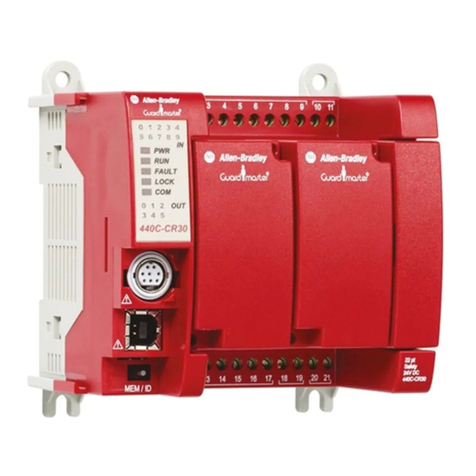
Rockwell Automation
Rockwell Automation Allen-Bradley Lifeline 4 Application Technique
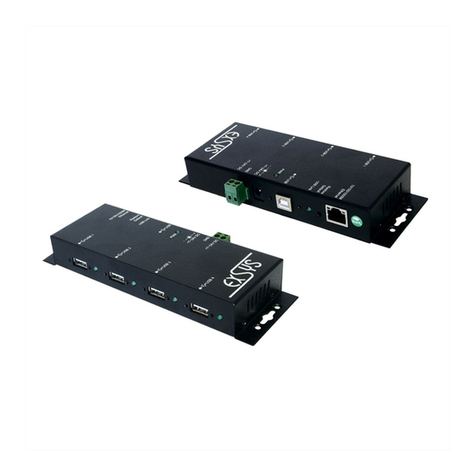
Exsys
Exsys EX-6002 manual

Yamaha
Yamaha SWR2310-28GT owner's manual
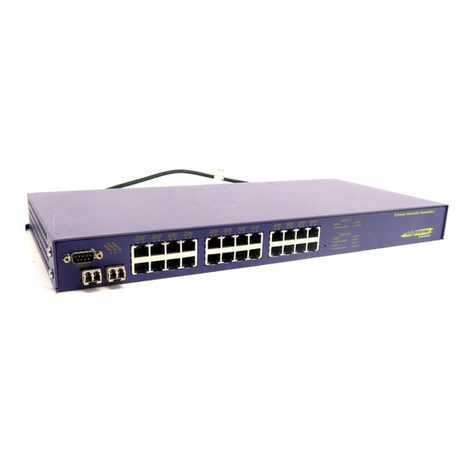
Extreme Networks
Extreme Networks Summit Summit24 Installation and user guide
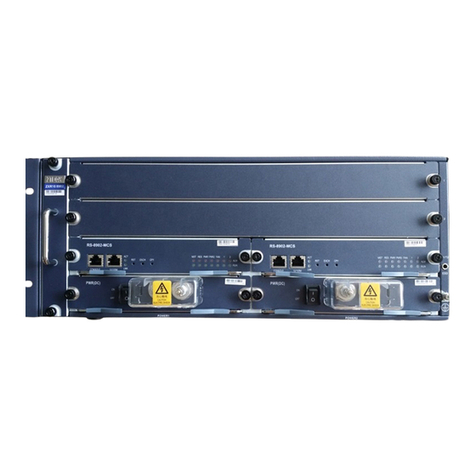
Zte
Zte ZXR10 8900 Series Command reference

KBT
KBT TPR22-BM Series Installation and operating manual
